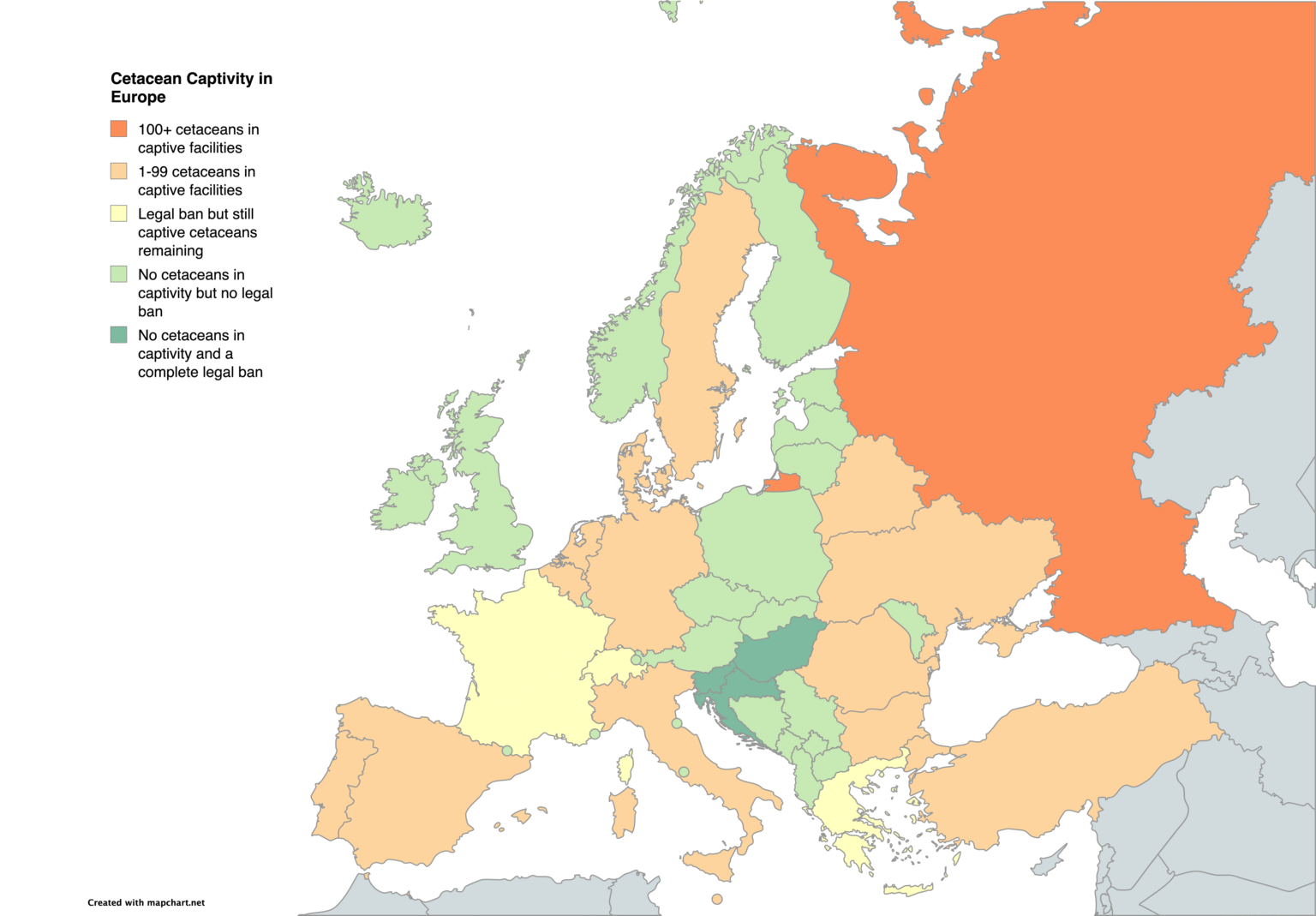As of 2025, 14 European Union countries keep cetaceans containing at least 27 facilities, with Spain housing 8 of them.
Should you know of any updates, please contact us so we can keep this list current. We recommend that you check out CetaBase.org a non-profit organisation which documents captive cetaceans, worldwide. They have a specific section for European Union countries, with links to each facility and details about the number of individuals held at each location.
Dolphinaria in the EU hold a reported 270 captive cetaceans. The majority, a reported 251, are bottlenose dolphins (Tursiops truncatus and Tursiops truncatus ponticus). Orcas (Orcinus orca), Belugas (Delphinapterus leucas) and Harbour Porpoises (Phocoena phocoena) are also held.

